The Listening Room Archive 2011
A curated collection of the finest works from MIT's Music Program
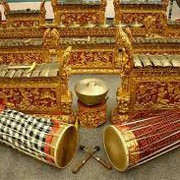
Gamelan Galak Tika
Tire Fire, Part 5
Evan Ziporyn
Gamelan Galak Tika
Directed by Evan Ziporyn, Kenan Sahin Professor of Music
Balinese gamelan, electric guitars, electric bass & keyboard
The piece combines traditional Balinese techniques with the sounds & rhythms of western music, and is typical of the work Galak Tika does in bringing these two cultures together & fostering new work by Balinese & American composers.

John Harbison, Institute Professor of Music
Diamond Watch
Double Play for Two Pianos (2009)
John Harbison, composer
Premiere performance by Robert Levin and Ya-Fei Chuang, Piano
Kresge Auditorium, April 30, 2010
Variations based on the unofficial anthem of American baseball, the 1908 tin pan alley song "Take Me Out to the Ball Game"
Musical allusions commence with the opening chords, and as the composer writes, "The movement titles offer a heavy hint as to the origin of the ground." Diamond Watch was commissioned by Priscilla (Kate) Myrick Diamond as a retirement present for Peter Diamond, MIT Institute Professor of Economics, Nobel prize winner for Economic Sciences — and baseball fan.
Movements
1. Leading off
2. Taking a pitch
3. Low and inside
4. High and outside
5. On deck circle
6. Making contact
7. Stealing a base
8. Diamond daze
9. Ahead on the count
10. Swinging for the fences
11. Stroking a hit
12. Walkoff
played without substantial pauses
Composer's Note
"Diamond Watch" was fun to write, a piece for an occasion I envisioned as enjoyable, with cherished performers, attentive listeners, and a location I’ve grown to love, even for its acoustics, Kresge Auditorium at MIT.
The dedicatee, Peter Diamond, is one of the world’s sovereign economists, but his other interests include baseball. I got to thinking about the various intersections between games, statistics, musical shapes, rules, frames, and predictions, and began imagining a series of variations.
In my favorite kind of variation the “theme” itself is not overtly stated. This is the idea of the baroque passacaglias: the bass and its harmony are the real source. Bach’s Goldberg Variations and his solo violin Chaconne proceed this way, as does Corelli’s La Folia.
I have previously written shadow-theme variations on a large scale, for violin, clarinet and piano, and quite brief, in my second piano sonata (for Robert Levin). This one is somewhere between those in duration, about twelve minutes.
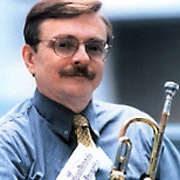
Mark Harvey, Lecturer in Music
Saxophrenia
Mark Harvey, composer
Performed by Peter H. Bloom and Dan Zupan
with the MIT Festival Jazz Ensemble
Saxophrenia was commissioned by the MIT Festival Jazz Ensemble and premiered on May 10, 2002 in Kresge Auditorium by Guest Artists Joe Lovano with the MIT saxophone section. This recording from 2010 is a revised version for full jazz big band. Inspired to an extent by Indian music, the piece moves from meditative to exuberant moods, allowing ample room for improvisational contributions by the players.
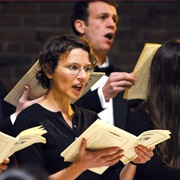
MIT Chamber Chorus
Under the Willow Tree
Vanessa, Act II
Samuel Barber
William Cutter, Music Director
Under the Willow Tree is a beautiful duet from Barber's opera, "Vanessa." It first premiered at the Metropolitan Opera in New York City in 1958. The story revolves around a love triangle between Vanessa, her niece Erika, and Anatol, the son of Vanessa's former lover.
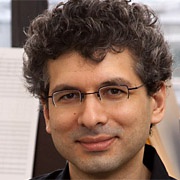
Keeril Makan, Associate Professor of Music
Washed by Fire
Keeril Makan, composer
Performed by the Kronos Quartet
From "In Sound" (Tzadik, 2008)
Composer's Note
"Collaboratively conceived with choreographer Benjamin Levy, the inspiration for Washed by Fire came from the desire to explore issues of cultural and personal identity. We attempted to explore parallels in our family histories based upon flight from repressive governments and cultures. Levy’s parents are Persian Jews who escaped Iran during the Islamic Revolution in the 1970s. My father is Indian but was raised in South Africa, from which he emigrated in the late 1960s to escape Apartheid. My maternal grandfather was a Jew who escaped Russia during the Russian Revolution. This proved to be an impossibly difficult conceptual starting point, which we had to circumvent in order to begin creating.
"We proposed creating materials, both musical and gestural, which we were attracted to in some instinctual way, but would ordinarily be ashamed of because of their simplicity and wouldn't want other people to hear or see. I took this idea to heart. By embracing musical references that my mind often avoids, I was able to reconnect with rhythm, melody, and mode in a way that is markedly different from my other recent music.
"I created a piece that resonated with me on a fundamental level, one in which my emotions are not filtered by abstraction, where the focus is on a visceral connection with time. The piece attempts to be honest about the difficulty of understanding how identity is constructed, but at the same time acknowledges that connections to a cultural and familial past shape means of expression."
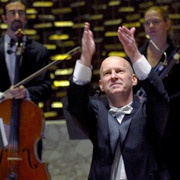
MIT Chamber Chorus
Spring Rituals
Lo the earth awakes again
William Cutter
William Cutter, Music Director
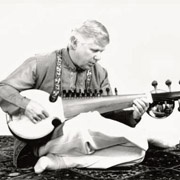
George Ruckert, Senior Lecturer in Music
Rag Shenan Mand
Performed by George Ruckert, sarod
Swapan Chaudhuri and Samir Chatterjee, tabla
Nilaswati Productions NS 001, 2008
It is common for a Hindustani classical instrumental artist to conclude a program with a "dhun," or folk melody. In this case, George Ruckert takes Shenandoah and blends it with traditional folk melodies of Rajasthan (Mand) and Bengal in the style of his teacher, Maestro Ali Akbar Khan. He plays the traditional twenty-five stringed lute, the sarod, which is able to slide the pitches owing to its being played with the fingernails on a smooth metal fingerboard.
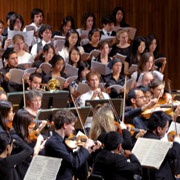
MIT Concert Choir
Song of Liberty, A Blake Cantata
I. The Marriage of Heaven and Hell: The Argument
Peter Child, Professor of Music
William Cutter, Music Director
The opening movement of Song of Liberty: A Blake Cantata is the beginning of William Blake's The Marriage of Heaven and Hell. This is Blake in his most thunderous, prophetic voice: “Rintrah roars & shakes his fires in the burden’d air; / Hungry clouds swag on the deep." The prominent percussion in the music accentuates the dramatic, insistent tone of the poetry, and the imagery is captured through transparent musical allusion depicting the buzzing of bees, the flowing waters of the river and the spring, the creeping serpent. After this apocalyptic first movement, the remainder of the cantata treats Blake's celebration of love and mysticism.
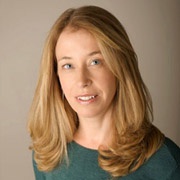
Elena Ruehr, Lecturer in Music
Shimmer (clip)
Elena Ruehr, composer
Performed by Metamorphosen
From "Metamorphosen" (Albany Records, 1996)
Elena Ruehr's Shimmer, for string orchestra, was commissioned by Metamorphosen for their premiere season. Strongly inspired by the energetic string music of Vivaldi, Shimmer uses imitative counterpoint as its basis. However, the harmony, rhythm and form is structured using a cyclical 10 note series instead of traditional tonality. The title refers to the shimmering texture that is created through bowing, trilling and ornamentation.
Story at MIT News | Elena Ruehr website
Video: Dance performance with "Shimmer"
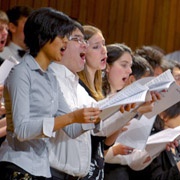
MIT Concert Choir
Dona nobis pacem (Grant us peace)
first movement
Ralph Vaughan Williams
William Cutter, Music Director
Ralph Vaughan Williams wrote this 1936 cantata for chorus and orchestra with soprano and baritone soloists. The six part work draws from three poems by Walt Whitman, several liturgical texts, and an anti-war speech by John Bright.
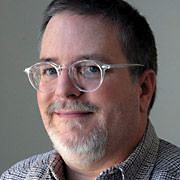
Charles Shadle, Senior Lecturer in Music
Penny Ballad of Elvious Ricks
Poem by R.G. Villet
Charles Shadle, composer
Performed by the MIT Chamber Choir, William Cutter, Director,
Ada Au, Piano
Composer's Note
"This is a setting of R.G. Villet's poem 'Penny Ballad of Elvious Ricks.' A particular glory of Vliet’s writing is the precision with which he delineates the culture of late 19th/early 20th century rural Texas. The speech patterns in the poem are those of the first voices I heard, the culture that of my own childhood.
"I wondered if such a regionally-inflected, personal work would find a performance, and was delighted when Dr. William Cutter, offered to perform the work with MIT's Chamber Chorus. The premier took place on April 29, 2005 in Kresge Auditorium.
"In this setting of 'Penny Ballad of Elvious Ricks' various musical materials evoke the poem’s time and place. The 'cloudy' tonal harmony and the often-pentatonic shapes of the melodies recall folk and early country music traditions. There is a rustic waltz, and reference is continually made to the Protestant hymn tradition. I am deeply grateful to the poet’s wife, Ann Viliet for granting permission to set this work to music, and the score bears a dedicatory inscription to her."
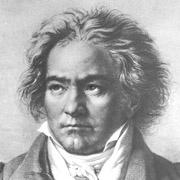
MIT Chamber Music Society
Andante from Wind Octet in Eb major, Op. 103 (1793)
Ludwig van Beethoven (1770-1827)
Edward Yang '12, oboe
Laura Ware '12, oboe
Claxton Everett '10, clarinet
Lisa Danz '10, clarinet
Elise McCall '11, horn
Bridget Wall 'G, horn
Darcy Wanger 'G, bassoon
Ben Steinhorn '12, bassoon
Jean Rife, coach
Beethoven composed this octect during his early period, from 1792-1793. His compsitional technique from the early period is in the classical, rather than Romantic style of his later well-known works. This piece is scored for 2 oboes, 2 clarinets, 2 horns, and 2 bassoons and is divided into four movements. The second movement is featured here.
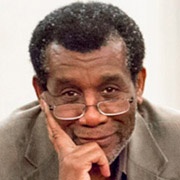
Marcus Thompson, Robert R. Taylor Professor of Music
Synapse for Viola and Computer (1976)
Performed by Marcus Thompson, viola
Barry Vercoe, Professor Emeritus, composer
FAST Festival Music | Machines Concert at the Media Lab
February 5, 2011
Synapse for Viola and Computer (1976) was the first major work to emerge from MIT’s Experimental Music Studio using its graphical Score Editing system and the Music-11 language for audio synthesis on PDP-11 machines. The work was dedicated to American violist Marcus Thompson.
As a construct of the 70’s before the advent of real-time audio processing two decades later, Synapse squarely confronted the problem of integrating live performance with pre-processed and pre-recorded digital audio, where the performer must do all the hard work of maintaining sync. This was aided by an electronic part that provides irregular “jump-off” points—typically at the end of longish viola notes—from which a performer skilled in chamber music can take synapse-like cues to maintain sync.
Synapse has been performed at the Kennedy Center in Washington DC, and at the Adelaide Festival in Australia. In 1999 it was given a truly interactive performance in MIT’s Kresge Auditorium using two computers—one pitch-tracking and score-following the performer while a second responded with sensitive tempo-adjusted audio, giving the soloist all the freedom he has ever craved. This performance, however, is a restaging of the original version, with the soloist expressing himself within the confines of an inflexible 70’s digital accompaniment.
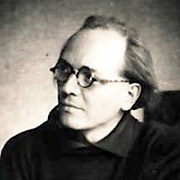
MIT Chamber Music Society
V. Louange à l'Éternité de Jésus
Quartet for the End of Time (1941)
Olivier Messiaen (1908-1992)
Tanya Goldhaber '10, violin
Sarah Rumbley '12, piano
Stephen Serene '12, cello
Evan Ziporyn, clarinet, coach
This is the fifth of eight movements from Messiaen's "Quartet for the End of Time," written in 1941 for violin, piano, cello, and clarinet. Messiaen drew inspiration for this piece from the Biblical book of Revelation. Louange à l'Éternité de Jésus, or "Praise the eternity of Jesus," features cello and piano.
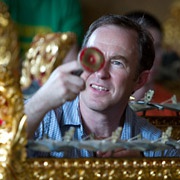
Evan Ziporyn, Kenan Sahin Professor of Music
Frog's Eye
Evan Ziporyn, composer
Performed by the Boston Modern Orchestra Project
Cantaloupe Records, 2006
"I'm quite convinced in some ways that the camera has given us a somewhat blinkered look. We're looking at the world through a hole—we're getting a bit of tunnel vision. And so I'm trying to widen it, trying to put in more than just looking ahead. And when you do, the viewer is pulled in more. So I get quite excited by that. I spent rather a long time experimenting with optics, and actually now my intention is to throw them away and use my two eyes and what I think of the world and look at it, look at the real world. I don't watch television much, I look at the garden, that's the real world I think, so that's what I'm going to do."
— David Hockney, NPR Weekend Edition
Composer's note
"This piece was inspired by a particular frog, in a particular pond on a particularly hot New England summer day. Swimming across a pond in the rampant fecundity of such a summer day, dwarfed by water and sky, ringed by trees and leaves, a body can feel small and unimportant—but also wondrously alive.
"As it turns out, this is close to the frog's-eye view: perched on a rock in shallow water, 99 percent immersed, only its huge panoptic eyes above the water line. Perfect stillness, perfect contemplation, patience, serenity, all that good Zen stuff. Keeping cool while maintaining absolute vigilance.
"He was in fact hard at work, staring intently, waiting for a moment of action and violence, for insects, for food. The view was incidental as far as he was concerned. Meanwhile, back among the humans, we live our directed lives, cutting across the sensory present, intersecting with it, ignoring it, misapprehending, misinterpreting. This is undoubtedly our own biological necessity. We strive for a certain type of awareness, for multilayered perception, and occasionally we get there, but we seem to be built for subjective narrative. We've got to catch the fly to survive. I personally don't have a problem with this, but—like Mr. Hockney—I'm trying to look at my surroundings while still advancing the story line."
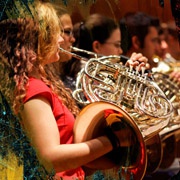
MIT Symphony Orchestra
Symphony No. 3 in C Minor, "Organ"
Movement No. 2
Camille Saint-Saëns
Kresge Auditorium | 7 May 2010
Adam K. Boyles, Music Director
Symphony No. 3 first premiered in 1886 and was directed by Saint-Saëns himself. The addition of the organ to the traditional instrumentation makes this symphony distinct. The compositional technique of thematic development can be heard throughout the piece.
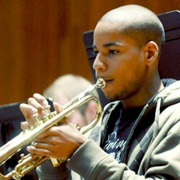
MIT Wind Ensemble
Second Suite in F (Op.28, No.2)
Movement No. 4 "Fantasia on the Dargason"
Gustav Holst
The Second Suite in F, composed in 1911, is one of the cornerstones of the wind ensemble literature. Movement Four, "Fantasia on the Dargason," is based on a 17th century English dance tune. The folk melody Greensleeves is elegantly partnered with the Dargason by the composer. Holst later rearranged this movement for string orchestra, as the final movement of his St. Paul's Suite.
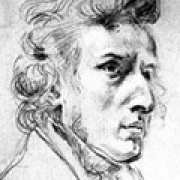
Anirudh Arun '13
Nocturne in Db Major, Op. 27
Movement No. 2
Frederic Chopin
Performed by Emerson Scholar, Anirudh Arun '13, piano;
Biological Engineering major. (At MIT, many science and
technology students also do advanced musical studies
in the conservatory-level Emerson Scholars Program.)
Nocturne in Db Major, Op. 27 is the second of two solo piano pieces composed by Chopin in 1836. The piece is based on a theme and variations on a single mood. Chopin's use of ornamentation is particularly striking in this piece.
Suggested links
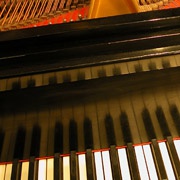
Jennifer Lai '10
Danzas Argentinas, Op. 2
Alberto Ginastera
Performed by Emerson Scholar, Jennifer Lai '10, piano
Danzas Argentinas, Op. 2 is a set of three dances for solo piano composed by Alberto Ginastera in 1937. Each dance evokes a contrasting mood with its harmony and tempos. One can hear a range of consonant and dissonant sounds and very fast and slow tempos.
Suggested links
Jennifer Lai wins Rhodes Scholarship
About the Emerson Scholars Program
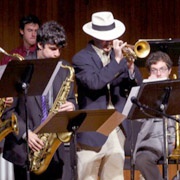
MIT Jazz Combo
Rare
Adam Schwartz '10
Adam Schwartz, piano
Andrew Shum, alto
Anthony Morelli, alto
Clark Davenport, drums
David Garcia, drums
Ibrahim Badr, bass
Ken McEnaney, trombone
Marty Singh, guitar
Michael Grinich, piano
Ryan Morrow, tenor
Wei-Yang Sun, alto
"Rare began with a single idea: a five-note pattern—"12345"—alternating with a two-note pattern—"ab"—repeating idefinitely:1a2b3a4b5a1b2a3b4a5b. (Notice that since five is odd and two is even, it takes twenty notes for the pattern to repeat itself.) Ultimately, this idea spawned two similar but distinct Rare works: one for orchestra, and another for small jazz ensemble. Each work is a dissection of the pattern—a struggle to understand, both emotionally and computationally, what makes a theme built on such a simple idea so intoxicating." — Adam Schwartz | Polymath website
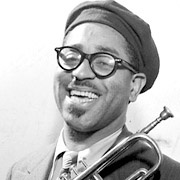
MIT Festival Jazz Ensemble
Birk's Works
Dizzy Gillespie
Frederick Harris, Music Director
Birk's Works is a classic, minor blues composition from 1957 by John Birks (Dizzy) Gillespie. This arrangement by Mike Tomaro shifts from mambo to swing, and features tenor saxophone and trumpet.
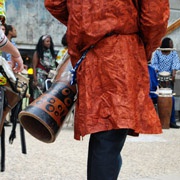
Rambax
Tuus
Rambax
MIT Senegalese Drum Ensemble, Dec. 2009
Directed by Lamine Touré, MIT Artist-in-Residence
and Patricia Tang, Professor of Music
Video of Rambax performing "Tuus" at the MIT Next Century Convocation.
"Tuus" is a traditional rhythm, hundreds of years old, played on Senegalese sabar drums. It was traditionally played to welcome kings and nobles, and others of importance as they entered a room. Rambax memorably performed "Tuus" as part of MIT's Next Century Convocation, the culminating event of the MIT150 celebration.